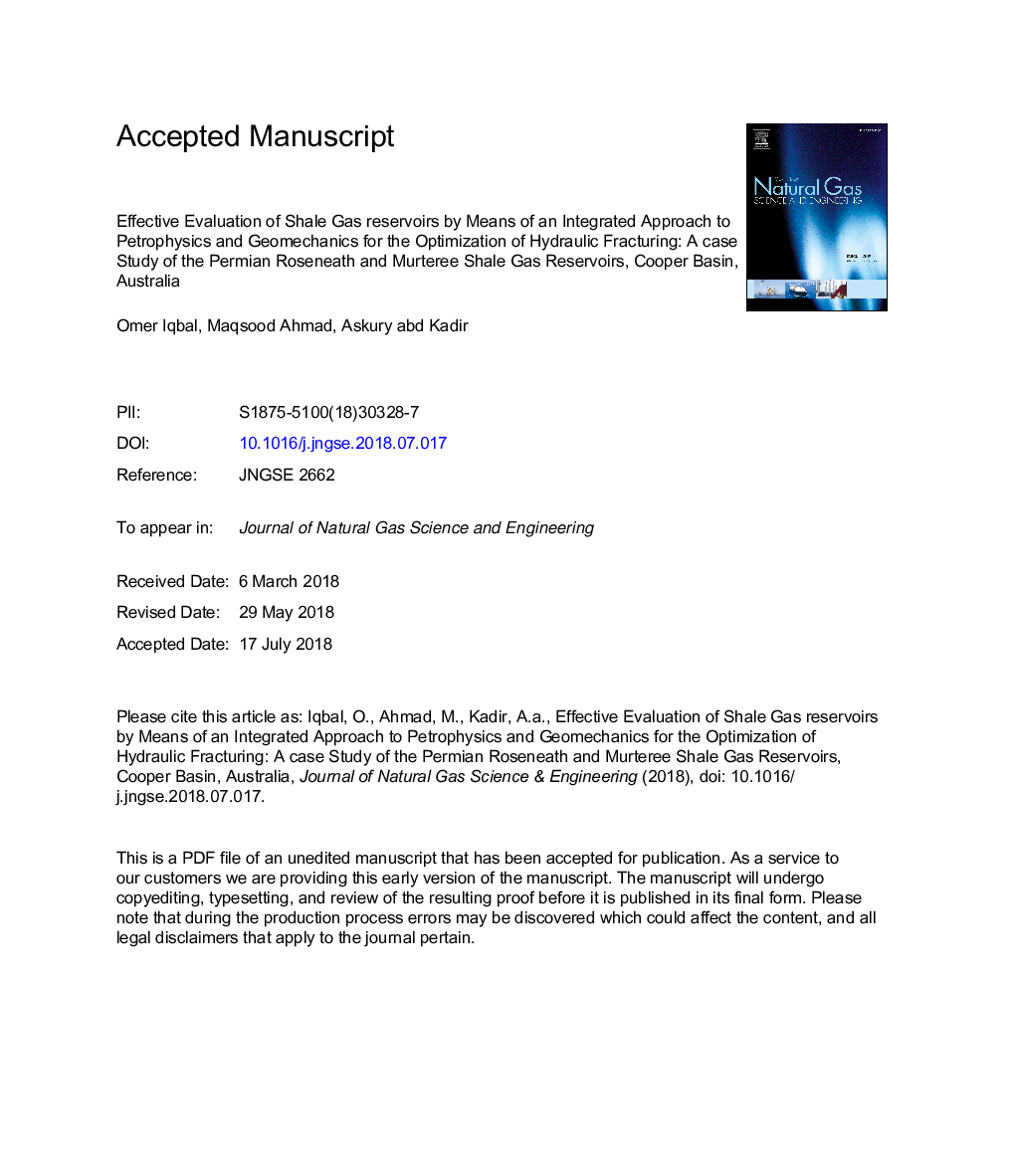| Article ID | Journal | Published Year | Pages | File Type |
|---|---|---|---|---|
| 8127781 | Journal of Natural Gas Science and Engineering | 2018 | 56 Pages |
Abstract
Brittleness and in-situ stress states are known critical indicators for screening prospected layers during hydraulic fracturing in unconventional reservoirs. Brittleness can be inferred from mechanical parameters and mineralogical data, primarily using empirical relations, although an incomplete dataset limits their use. Therefore, a dataset with a systematic framework was designed based on well logs, and details core data spudded in the Permian Roseneath and Murteree shales from the Cooper Basin, Australia. Petrophysical and geomechanical models were designed to indicate shale mineralogy, total organic richness, porosity, in-situ stress conditions, brittleness index, pore pressure, and fracture pressure gradient. After a review of various definitions of brittleness index (BI) in recent literature, it will be argued that the definition of a brittleness index is with reference to either elastic parameters, mineralogical composition, or strength parameters. Consequently, a higher brittleness index is assigned to quartz and siderite rich rocks than to clay, organic matter, and porosity rich rocks. Some recent definitions of BI are therefore useful for indicating rock types, but brittle/ductile behavior is not necessarily any indicator of brittle/ductile failure during stimulation. It is therefore proposed that an accurate BI must be incorporated into a geomechanical model. This new model will comprise the following properties: elastic and strength parameters, in-situ stress state, fracture pressure gradient, and pore pressure. Such an integrated model can be used to find 1) Fracture barriers (the layers hindering fracture growth); 2) Potential layers that enhance fracture growth, and; 3) Direction of induced fractures on the bases of the stress regime.
Related Topics
Physical Sciences and Engineering
Earth and Planetary Sciences
Earth and Planetary Sciences (General)
Authors
Omer Iqbal, Maqsood Ahmad, Askury abd Kadir,
